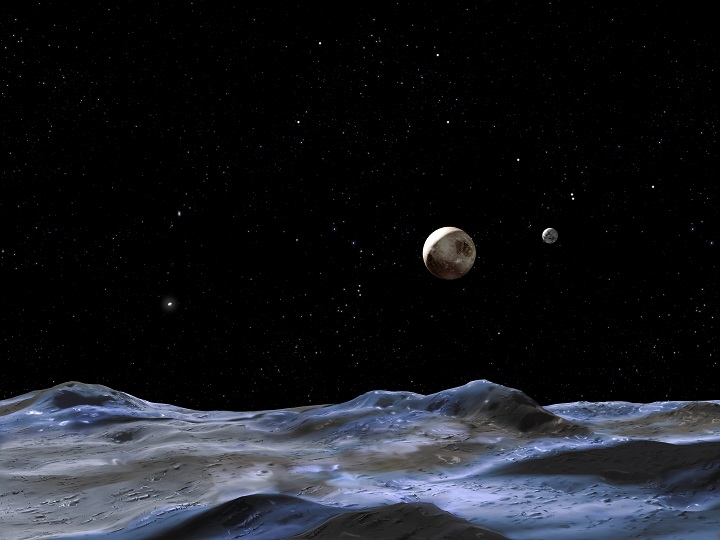If the icy surface of Pluto’s giant moon Charon is cracked, analysis of the fractures could reveal if its interior was warm, perhaps warm enough to have maintained a subterranean ocean of liquid water, according to a new NASA-funded study.
Pluto is an extremely distant world, orbiting the sun more than 29 times farther than Earth. With a surface temperature estimated to be about 380 degrees below zero Fahrenheit (around minus 229 degrees Celsius), the environment at Pluto is far too cold to allow liquid water on its surface. Pluto’s moons are in the same frigid environment.
Pluto’s remoteness and small size make it difficult to observe, but in July of 2015, NASA’s New Horizons spacecraft will be the first to visit Pluto and Charon, and will provide the most detailed observations to date.
“Our model predicts different fracture patterns on the surface of Charon depending on the thickness of its surface ice, the structure of the moon’s interior and how easily it deforms, and how its orbit evolved,” said Alyssa Rhoden of NASA’s Goddard Space Flight Center in Greenbelt, Maryland. “By comparing the actual New Horizons observations of Charon to the various predictions, we can see what fits best and discover if Charon could have had a subsurface ocean in its past, driven by high eccentricity.” Rhoden is lead author of a paper on this research now available online in the journal Icarus.
Some moons around the gas giant planets in the outer solar system have cracked surfaces with evidence for ocean interiors – Jupiter’s moon Europa and Saturn’s moon Enceladus are two examples. and coalesced under its own gravity to form Charon and several smaller moons.
